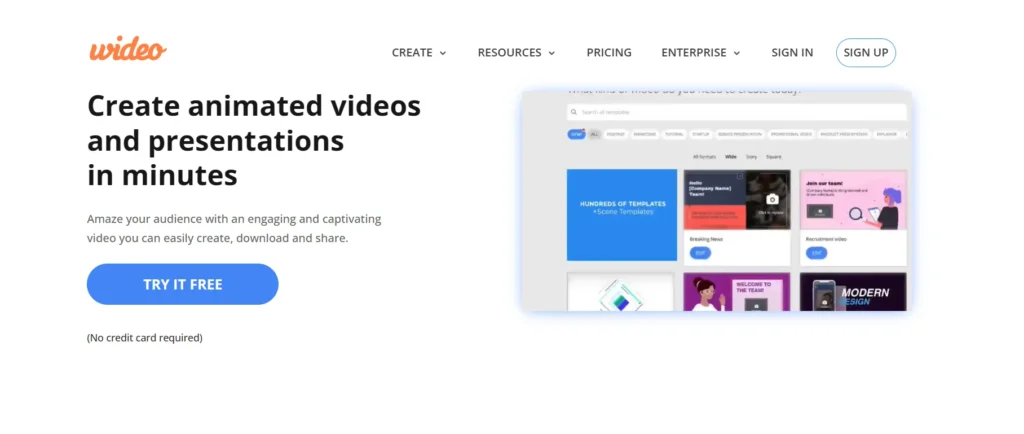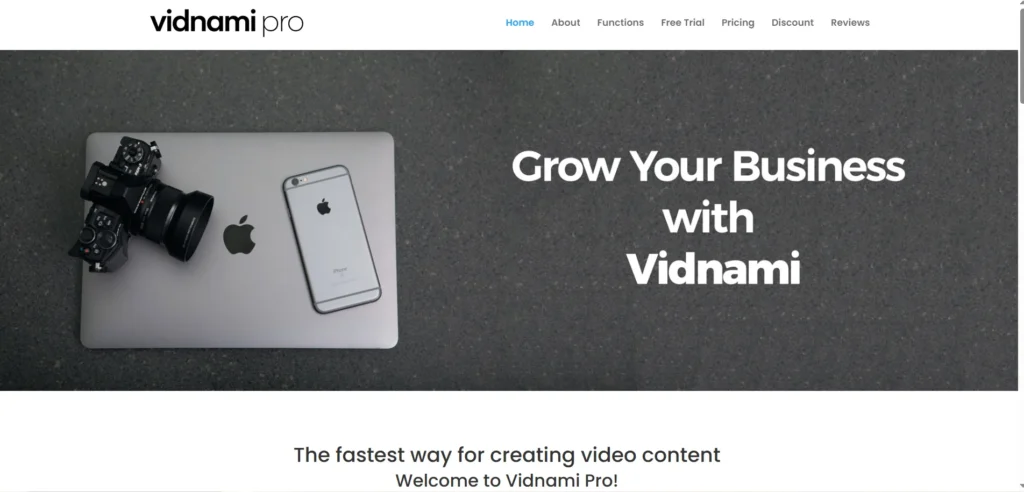Wideo is an online video creation platform designed to help users produce animated videos quickly and easily, without requiring advanced design or editing skills. It’s particularly appealing to marketers, educators, small business owners, and content creators who want to communicate ideas visually but lack the time or resources to hire a professional video editor. With drag-and-drop functionality and a library of templates, Wideo aims to simplify the video production process. But is it the right tool for your needs? This article explores its strengths, limitations, and overall value to help you decide.
Is Wideo Right for You?
Wideo is best suited for individuals and small teams who need to create short, engaging videos for presentations, social media, marketing campaigns, or educational content. It’s especially useful for:
- Marketing professionals creating explainer videos or product demos
- Educators designing animated lessons or tutorials
- Small business owners promoting services or events
- Content creators looking to add visual flair to their messaging
However, Wideo may not be ideal for users seeking high-end video production capabilities. Professional video editors or filmmakers might find the platform too limited in terms of customization, effects, and audio control. If your project requires cinematic quality or complex animations, Wideo might not meet your expectations.
What It Does Well
- Intuitive drag-and-drop interface
- Wide selection of templates and animations
- Easy text and image integration
- Quick export and sharing options
- Time-saving for non-designers
One of Wideo’s biggest strengths is its user-friendly interface. Even those with no prior video editing experience can navigate the platform with ease. The drag-and-drop functionality allows users to build scenes, add animations, and insert text or images without a steep learning curve.
Templates are another strong point. Wideo offers a variety of pre-designed templates tailored to different industries and purposes, such as product launches, educational explainers, and social media ads. These templates can be customized to match your brand or message, significantly reducing the time it takes to produce a polished video. For example, a teacher might use a template to create a short animated lesson on a historical topic, while a startup founder could quickly assemble a pitch video for investors.
Where It Falls Short
Despite its strengths, Wideo has some limitations that may affect certain users. First, the platform’s animation and design options, while sufficient for basic needs, can feel restrictive for those looking for more advanced features. Users cannot create highly customized animations or manipulate elements with the precision found in professional software.
Second, audio editing capabilities are minimal. While you can add background music or voiceovers, the control over audio timing and mixing is limited. This can be frustrating for users who want to fine-tune their sound design or sync audio precisely with visual elements.
Lastly, performance can be an issue on lower-end devices or slower internet connections. Since Wideo is web-based, rendering and editing may lag depending on your system’s capabilities.
Free vs Paid: What’s the Catch?
Wideo offers a free plan that allows users to create videos up to 1 minute long, with access to a limited set of templates and features. Videos created on the free plan include a Wideo watermark and can only be shared via a link — downloading is not available.
Upgrading to a paid plan removes the watermark, unlocks longer video durations, and provides access to premium templates, commercial usage rights, and downloadable video files. Paid plans also include branding customization and priority support. For users who need to produce videos regularly or for professional purposes, the paid version offers significant value. However, casual users or those creating one-off projects may find the free version sufficient, despite its limitations.
Are There Alternatives?
- Animaker – Another beginner-friendly platform with a focus on animated videos
- Powtoon – Offers similar features with a slightly different style and interface
- Canva – Known for graphic design, but also includes basic video editing tools
Each of these tools has its own strengths and weaknesses, and the best choice depends on your specific needs and preferences. Exploring a few options can help you determine which platform aligns best with your workflow and creative goals.
Verdict
Wideo is a solid choice for individuals and small teams who need to create simple, animated videos without investing in complex software or hiring professionals. Its ease of use, time-saving templates, and accessible design make it a practical tool for marketers, educators, and small business owners. However, users seeking advanced customization, high-end animation, or detailed audio control may find it limiting.
If your video needs are straightforward and you value speed and simplicity, Wideo is worth exploring. But if you require more creative flexibility or professional-grade features, you may want to consider more robust alternatives.



